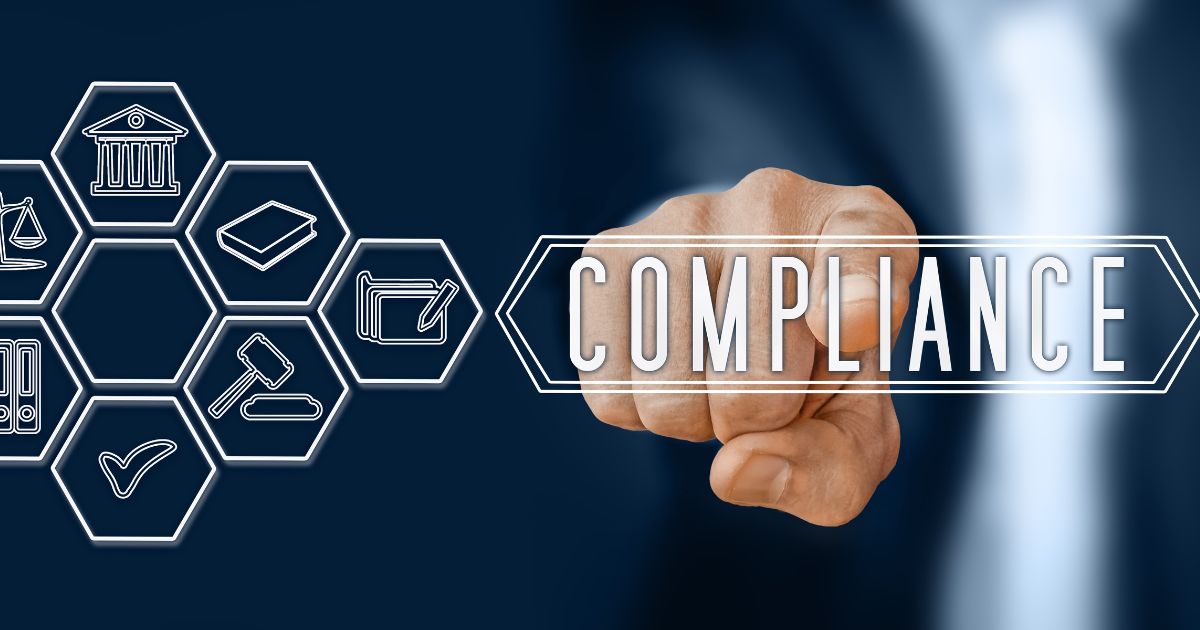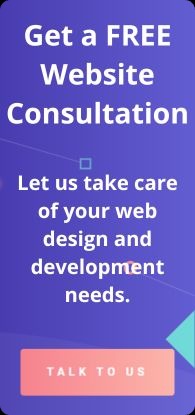
Website accessibility guarantees that all users can access and interact with a site, no matter their abilities or devices.
It’s about designing web pages and digital content that work for people with visual impairments, cognitive disabilities, motor challenges, and other conditions that affect their ability to browse the internet.
A truly accessible website provides the same experience to users of screen readers or keyboard navigation as it does to those using a mouse and touchscreen.
It’s about respecting every visitor’s right to access information, services, and opportunities online.
Now here’s the part some people overlook: accessibility is not optional.
In the United States, it’s directly tied to the Americans with Disabilities Act (ADA), a civil rights law.
That means your website isn’t just a marketing tool or digital storefront; it’s considered a public accommodation.
If your site isn’t accessible, you could be violating the law.
And that opens the door to legal consequences.
But more than that, it’s about doing the right thing.
Giving everyone a fair shot to engage with your brand or business shows that you care.
That you’re thoughtful.
And if you’re a website owner, that kind of intention speaks louder than any design element.
Understanding Accessibility Compliance
ADA compliance involves ensuring your website meets the standards established by the Americans with Disabilities Act.
This law protects the rights of individuals with disabilities and requires equal access to public spaces, and that now includes websites.
If someone can’t access your online content due to a lack of accessibility, that’s a barrier no different from stairs without a ramp at a store entrance.
To guide web designers and developers, the Web Content Accessibility Guidelines (WCAG) were created.
These guidelines are part of the Web Accessibility Initiative (WAI), which is led by the World Wide Web Consortium (W3C).
WCAG outlines the technical standards that help make content more accessible for people using screen readers, assistive technologies, and alternative input methods.
These aren’t suggestions, they’re benchmarks for building digital experiences that include everyone.
Beyond the U.S., many countries have adopted similar standards.
Local governments, nonprofit organizations, and private businesses are being held to these expectations.
Whether you’re running a small blog, a service site, or an online store, if you reach users in different regions or work with government funding, you’re expected to follow these international standards.
It’s not just smart business; it’s a responsibility.
Ready for me to move on to the next section?
Get a FREE Website Consultation
Let us take care of your web design and development needs so you can focus on your business. We can handle new websites, landing pages, website redesign, and even maintenance.
Contact us today to get a free website consultation!
Common Accessibility Barriers in Digital Content
1. Visual impairments (e.g., color blindness, low vision)
For someone with perfect vision, it’s easy to overlook just how much design depends on color and clarity.
But when a visitor has color blindness or low vision, a beautiful layout can quickly become a frustrating maze.
Suppose a website relies too heavily on color to convey information, such as using red for errors and green for success, without any accompanying labels.
In that case, that message might never be understood.
Add poor contrast between text and background color, and suddenly, reading a simple sentence turns into a guessing game.
That’s why enough contrast and clear design choices aren’t just a nice touch.
They’re essential.
2. Cognitive impairments and cognitive disabilities
Not every challenge is visible.
Website visitors with cognitive impairments or learning differences often struggle with elements such as cluttered layouts, unclear instructions, or overwhelming blocks of text.
Imagine landing on a site that feels like a puzzle, where it’s hard to focus, where the next step isn’t clear.
That’s what it can feel like without accessible design.
Breaking content into digestible chunks, using plain language, and guiding the user with clear headings and logical flow makes a world of difference.
These aren’t just best practices, they’re signs that you care about people’s experiences.
3. Challenges for screen reader users and those relying on keyboard-only navigation
Some folks never use a mouse.
They rely on keyboards or screen readers to navigate web pages.
When a site isn’t built with this in mind, the entire experience falls apart.
A button with no label.
A form field with no instructions.
A heading that doesn’t act like one in the code.
To most people, these appear to be minor oversights.
But for someone using assistive technology, it’s the difference between access and exclusion.
If links, buttons, and menus aren’t keyboard-friendly or marked up correctly in the HTML, users can get stuck or miss out on key information altogether.
That’s not just inconvenient, it’s unacceptable.
Issues with interactive elements, form fields, navigation menus, and video content
Interactive elements can be powerful, but only if everyone can utilize them effectively.
A fancy dropdown menu that disappears too quickly.
A video without captions.
A form that throws out cryptic error messages with no guidance.
All of these create barriers.
Every form field needs a clear label.
Every button should be self-explanatory.
Transcripts or captions should accompany videos.
Navigation menus should be easy to reach, especially with the Tab key.
These changes aren’t difficult to make, but they show your visitors that you respect their time and abilities.
Impact of screen size and mobile devices on accessibility issues
Phones and tablets come in all shapes and sizes, and not everyone taps or scrolls the same way.
Some use voice commands, while others utilize styluses or screen readers on mobile devices.
If your website isn’t responsive or if interactive features break on smaller screens, you’re locking people out.
Buttons too close together, tiny fonts, or side-scrolling nightmares make for a bad experience.
Everyone deserves equal access, no matter the device.
Best Practices for Accessible Website Design

Let’s discuss how to make your website work for everyone, without confusing or overwhelming.
If you’re a web designer, developer, or simply someone who wants to provide your visitors with a smoother and more inclusive experience, these practical steps can help you achieve that goal.
1. Use Semantic HTML and Logical Tab Order
Start with the bones of your site.
Using semantic HTML isn’t just good practice, it’s essential for assistive technology like screen readers.
Tags such as <header>, <nav>, <main>, and <footer> help establish a clear structure.
They guide users through your content, even if they can’t see the page.
Now, think about how someone might navigate using just the keyboard.
If the tab order jumps around randomly, it’s frustrating.
A logical and predictable tab flow allows users to navigate your site smoothly.
It’s a small thing that makes a big difference.
2. Add Alt Text for Images and Other Non-Text Content
Images, icons, and other visual elements need alternative text, short, clear descriptions that explain what’s there.
Alt text (also known as alt tags) enables screen reader users and individuals with low vision to comprehend visual content without needing to view it.
Avoid stuffing keywords or writing vague labels.
If it’s a button with a shopping cart, say “Add to cart,” not “image1.png.”
These descriptions help everyone, from people with visual impairments to search engines understand what your content is about.
3. Ensure Enough Contrast Between Text and Background
Color matters.
If your text blends into the background, even users with perfect vision might struggle to read it.
For someone with color blindness or low vision, it’s even harder.
Use contrast ratios that meet or exceed accessibility standards.
There are numerous free tools available that can help you test your design for sufficient color contrast.
Don’t rely on color alone to convey meaning; always back it up with text or symbols.
4. Make It Easy to Navigate with a Keyboard
Some users don’t use a mouse at all.
They depend on the Tab key to navigate between links and buttons.
If your site’s navigation isn’t keyboard-friendly, you’re shutting out a whole group of users.
Make sure every interactive element, menus, forms, sliders, can be accessed with the keyboard alone.
Keep navigation consistent from page to page so people always know where they are and how to move forward.
5. Include Text Transcripts and Clear Instructions
Audio and video content should never be a barrier.
Add transcripts and captions so users can read along if they are unable to hear the content.
When you ask visitors to fill out a form or complete an action, keep instructions straightforward.
Use everyday language and guide them step-by-step.
This helps users with cognitive impairments, language differences, or just limited time.
6. Use Clear Headings and End Tags
Screen readers use headings to help users jump from section to section.
So don’t skip heading levels or use them just to make text bigger.
Use headings the way they’re meant to be used, like a table of contents that outlines your content.
End tags also matter.
If you’re using HTML, make sure every tag that opens also closes properly.
This ensures clean code and makes your site easier to navigate for assistive technology.
7. Test Your Site Across Browsers and Mobile Devices
Ensure your website works seamlessly across all popular browsers and device screen sizes.
Someone using a mobile phone with assistive technologies should have the same access as someone on a desktop.
That means buttons should be easy to tap, text should resize without breaking layouts, and navigation should stay intuitive.
Test your design across different platforms, including Windows, Mac, iOS, and Android, and adjust it to resolve any issues.
Accessibility isn’t just for one device or one browser.
It’s for everyone, everywhere.
8. Write Helpful, Specific Error Messages
When something goes wrong, like a form submission failing, your message should help.
Saying “There was an error” isn’t helpful.
Instead, try “Your email address is missing” or “Please enter a valid phone number.”
Clear, friendly error messages reduce frustration and help people move forward confidently.
It’s a simple fix that builds trust and improves the overall experience.
Role of Web Designers and Content Authors

Creating an accessible website isn’t a one-person job.
It takes real teamwork.
Designers, developers, and content writers each bring something unique to the table, and when they collaborate with accessibility in mind, the results speak for themselves.
Let’s start with designers.
Every layout, color, font, and visual element matters.
Selecting colors with sufficient contrast is not only good design but also essential for individuals with low vision or color blindness.
Clear navigation helps everyone, especially users who rely on a keyboard or a screen reader to navigate.
And let’s not forget to ensure that interactive elements, such as buttons and forms, are easy to use without a mouse.
Developers make sure the structure behind the design works for people using assistive technologies.
That means clean, semantic HTML.
Labels for every form field. A logical tab order to prevent getting lost when pressing the Tab key.
Every detail counts when someone’s depending on it to understand or use your content.
Writers play a big role, too.
Effective content begins with well-defined headings and concludes with clear instructions.
Adding alternative text to images and transcripts to videos helps everyone access the full message.
Writers are the ones who make sure the information is understandable, no matter how it’s being consumed.
And all of this needs to be done with real people in mind, people who live with visual, cognitive, or physical disabilities.
Understanding your audience means more than just following a guideline.
You meet a need.
That’s what turns a website into a tool that works for everyone.
Tools and Resources for Compliance

Getting accessibility right doesn’t mean guessing.
Some tools and resources make it easier to identify issues, adhere to standards, and improve your site incrementally.
Accessibility checkers like WAVE, axe DevTools, and Lighthouse are a good place to start.
They scan your pages and point out problems with color contrast, missing alt text, keyboard focus, and more.
These tools won’t fix everything, but they do give you a roadmap of what to look at next.
If you’re aiming for Level AAA compliance under the Web Content Accessibility Guidelines (WCAG), it helps to go straight to the source.
The WCAG documents, published by the World Wide Web Consortium (W3C), lay out exactly what’s expected.
It’s not always light reading, but it gives clear rules for making your website truly accessible.
And here’s why it’s worth the effort: building for equal access doesn’t just protect you from legal trouble.
It opens the door for more visitors.
More customers.
More people who feel welcome and understood.
Accessible websites perform better in search engines, and they create a better user experience for everyone, including those on mobile devices, those in a rush, and even those who are simply tired and need clarity.
Accessibility isn’t a checklist.
It’s a mindset.
And when you adopt it, your website becomes something more than just a page, it becomes a space that gives equal opportunities to everyone who lands on it.
The Business Case and Social Responsibility
Let’s talk SEO.
When you write clean HTML code, use proper alt tags, and structure your site with headings that make sense, search engines notice.
They love websites that are easy to crawl and understand.
That means better rankings, more clicks, and more opportunities to connect with people who are already looking for what you offer.
Consider the audience you might be overlooking.
Screen reader users, people with visual impairments, low vision, color blindness, cognitive disabilities, or mobility issues, all want to browse, shop, and read online just like anyone else.
When your site works for them, you’re opening the doors to a wider audience.
You’re not just being inclusive; you’re being smart.
If you run an online store, imagine someone trying to buy a product but can’t find a clear description, or the checkout button is inaccessible with a keyboard.
That’s a lost sale.
And it’s avoidable.
Making your digital content more accessible means fewer barriers, more trust, and more conversions.
It could be as simple as adding text alternatives for images, providing clear instructions on form fields, or fixing your contrast ratio so everyone can read your content.
Let’s not forget something that seems basic but is often overlooked: your contact information.
If someone wants to reach you and they can’t find a way that works with their assistive technology, they’ll leave.
And they probably won’t come back.
The same applies to inconsistent navigation, poor error messages, or web pages that only function correctly on certain devices.
This is where smart design meets social responsibility.
You’re not just improving usability.
You’re showing people you care.
And that goes a long way.
Final Thoughts
Here’s the first thing to keep in mind: accessibility helps everyone.
Whether someone is using a screen reader, navigating with the tab key, or browsing your site on a small screen, accessible web design creates a smoother and more welcoming experience.
That’s something every website visitor deserves.
If you’re a website owner, this isn’t just about meeting legal requirements.
Yes, ADA compliance and web accessibility guidelines matter.
But this is also about social responsibility.
It’s about demonstrating your commitment to equal opportunities, inclusion, and doing business the right way.
And let’s be honest, accessible design makes sense.
It protects your brand, strengthens your SEO, increases conversions, and helps you reach a wider audience.
It’s not a nice-to-have.
It’s a must.
If you haven’t already, now’s the time to start.
Run an audit.
Fix what needs fixing.
Make your entire website friendly to all users, regardless of their abilities.
Because accessibility isn’t a trend.
It’s a standard.
And it starts with you.
We Have Delivered High Quality Websites and Our Customers Are HAPPY!
“Good quality and responsive service. Isaias is a professional person, he is always aware of the needs of his clients. He has always helped me in my projects.”
CEO

